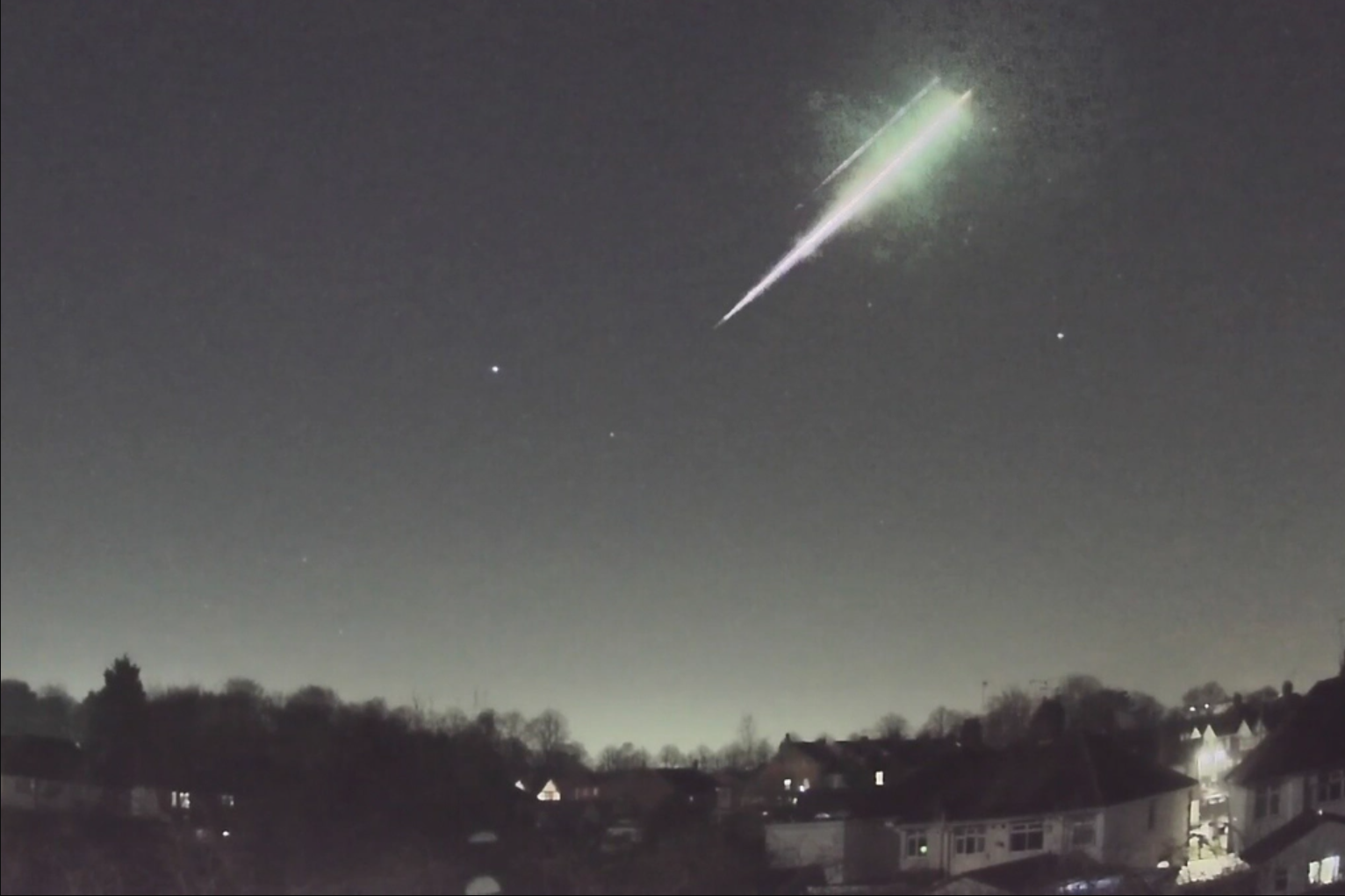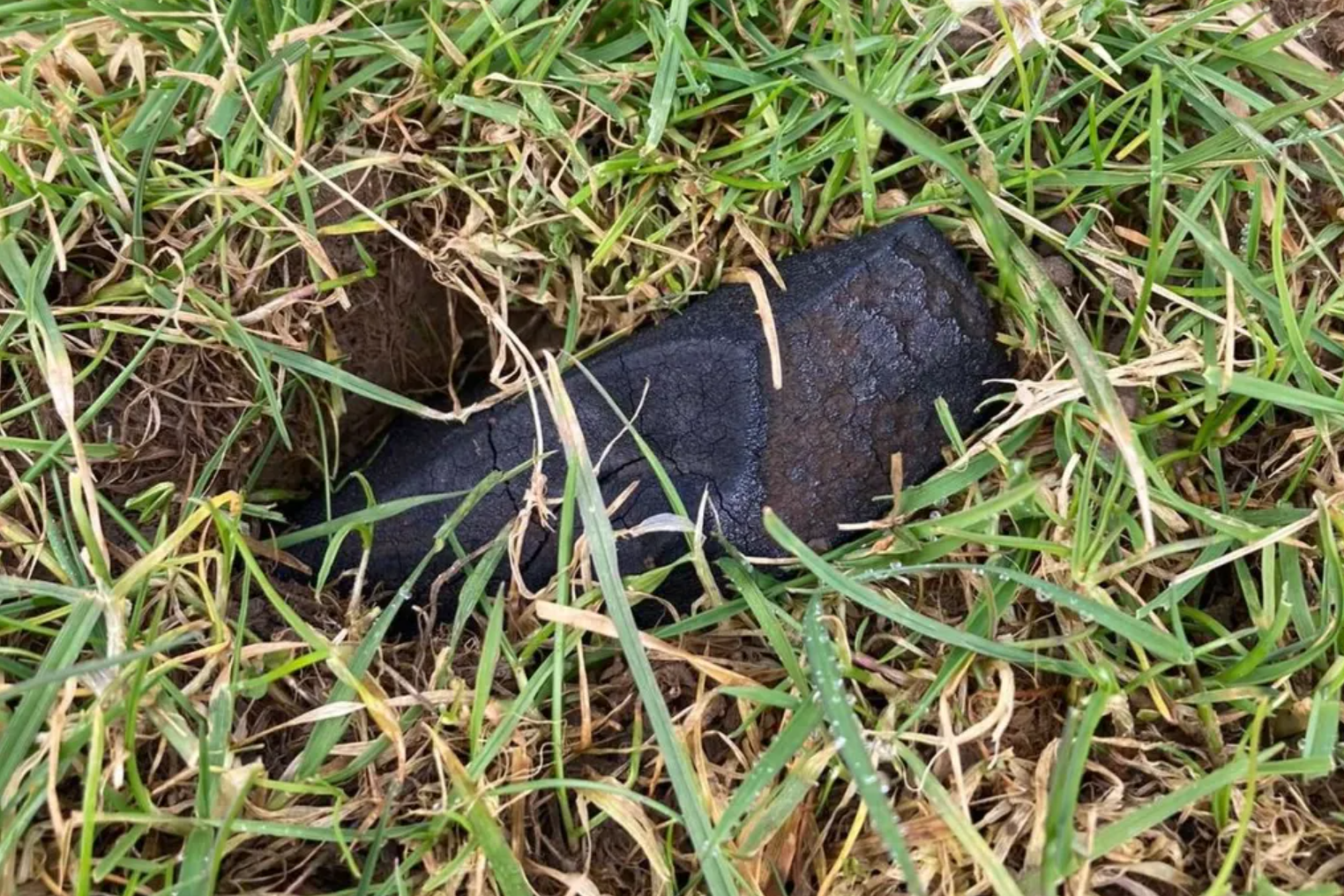A golden age for the discovery of secret spacecraft and lost meteorites
Rapid improvements in technology have heralded a golden age for amateur astronomers who can peer into distant galaxies for the first time, writes Anthony Cuthbertson


On a Sunday evening in late February 2021, a fluorescent green fireball flashed across the skies of Gloucestershire, heading in the direction of the village of Winchcombe. The 4.6 billion-year-old meteorite pre-dated the Earth and offered invaluable insights into the formation of the solar system. But weighing less than a bag of sugar and spread across hundreds of pieces, the space rocks could prove elusive to track down.
Lasting just eight seconds, none of the observers had a chance to capture a picture of the fireball, however a network of dedicated meteor cameras were able to reconstruct its trajectory and assist in its recovery. The work was done by the UK Fireball Alliance, one of dozens of citizen science initiatives set up in recent years that have been made possible by advances in technology and the falling cost of equipment.
This week, an astronomy enthusiast in Austria used a 14-inch telescope to capture images of a secretive Chinese space plane that has been orbiting Earth since last December. The pictures by Felix Schöfbänker revealed previously unknown features of the 10 metre-long craft, including solar panels and a possible antenna.
“We are in a new golden age of amateur astronomy,” Steve Brown, an amateur astronomer from North Yorkshire, tells The Independent. “In the past, the hobby was seen as somewhat of an elite pursuit, accessible only to those with the funds and the time to devote to it. In modern times though, anyone can take up the hobby and it can be very rewarding, even for those who are just starting out or who don’t have much time to dedicate to it.”

Alongside the decreasing costs, Mr Brown said that there has been a massive increase in the amount of online resources, as well as new forums and social media platforms to help introduce people to astronomy.
Advances in technology have also made astronomy and astrophotography possible without the need for specialist knowledge or equipment. Smart telescopes that automatically track the sky and can be controlled through an app are among the products that make the hobby more accessible.
“While the basic telescope design has not changed very much, the equipment and tools available to the amateur have changed beyond recognition,” Mr Brown says. “Along with the advancements in equipment, amateurs and professionals have developed dedicated software to compliment the capabilities of the equipment available. What is more, a lot of this software is free, making it more accessible to the amateur.”
Stargazing apps, which show the position of constellations and meteors through your smartphone, have seen a surge in popularity in recent years, boosted by recent night-sky events like the Perseid meteor shower and increased aurora activity from the current solar maximum. Consumer-grade smart telescopes are not free – they cost anywhere between £500 and £5,000 – but most are more advanced than the most high-end professional setups from just a decade ago.
Among the most popular smart telescopes are those built by Unistellar, a French startup founded in 2015 with the aim of democratising access to astronomy. The company’s next-generation Unistellar “smartscopes” allow anyone to spot anything from meteors to distant galaxies with no specialist knowledge.
Last year, dozens of Unistellar users were credited in the leading scientific journal Nature after they collectively observed the aftermath of Nasa’s Double Asteroid Redirection Test (DART) – a planetary defence mission aimed at developing new ways to save Earth from dangerous asteroids.
“It marks our entry into an era where the general public is becoming a decisive player in the conquest of space, holding the key to more discoveries and wider dissemination of scientific knowledge,” Laurent Marfisi, co-founder of Unistellar, told The Independent at the time.
Hundreds of Unistellar users have already joined the firm’s planetary defence research to spot hazardous objects. Spread all over the world, the project is able to track near-Earth objects 24/7 in order to better understand their movement and danger.
Citizen science initiatives like these have been responsible for some of the most exciting discoveries in recent years, with the UK Fireball Alliance’s work with the Winchcombe meteorite resulting in the UK’s first successfully recovered meteorite in over 30 years.
“This would not be possible without the contribution of citizen scientists and the growing public interest in astronomy and planetary science,” Charlotte Bays, a PhD candidate at Royal Holloway who serves as the secretary of the UK Fireball Alliance, tells The Independent.
“Through this shared enthusiasm and involvement, we gain more precise data, crucial for successful meteorite recoveries, whilst also contributing to meaningful research [and] promoting a deeper understanding of our universe.”






Join our commenting forum
Join thought-provoking conversations, follow other Independent readers and see their replies
Comments